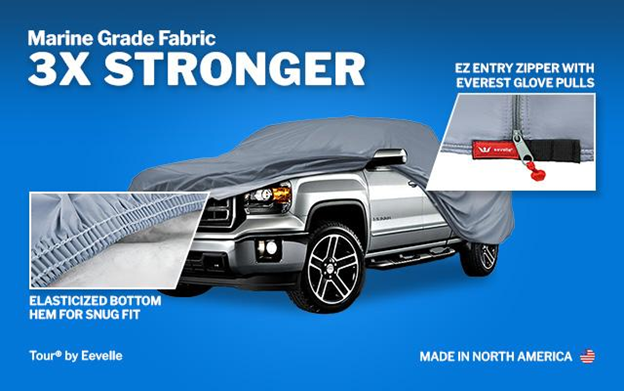Electric cargo bikes are making waves in urban commuting and logistics. Once seen as niche, these powerful two-wheelers are now a mainstream solution for eco-conscious families and businesses alike. But before you make the investment, it’s essential to weigh the pros and cons to see if an electric cargo bike fits your lifestyle and needs.
In this article, we’ll explore the key benefits, potential drawbacks, and answer the top questions about electric cargo bikes.
Table of contents
- Understanding Electric Cargo Bikes
- The Benefits of Investing in an Electric Cargo Bike
- The Challenges and Costs to Consider
- Is an Electric Cargo Bike Right for You?
- Conclusion
- FAQ: Top 10 Questions About Electric Cargo Bikes
- 1. How much do electric cargo bikes typically cost?
- 2. Can electric cargo bikes replace a car?
- 3. How far can an electric cargo bike go on one charge?
- 4. Are there government incentives for electric cargo bikes?
- 5. How much weight can an electric cargo bike carry?
- 6. What is the lifespan of an electric cargo bike battery?
- 7. How long does it take to charge an electric cargo bike battery?
- 8. Are electric cargo bikes safe for transporting children?
- 9. Can electric cargo bikes handle hills and rough terrain?
- 10. Do electric cargo bikes require a license or insurance?
Understanding Electric Cargo Bikes
Electric cargo bikes, often called e-cargo bikes, combine the practicality of a cargo bike with the power of an electric motor, making it easier to transport heavy loads without breaking a sweat. These bikes are specially designed for hauling everything from groceries and packages to pets and children — all while keeping your ride smooth and efficient.
Unlike standard electric bikes, which mainly help with commuting, e-cargo bikes come with reinforced frames and integrated cargo areas to safely and comfortably carry substantial loads. Whether you’re a busy parent juggling school drop-offs and errands, a small business owner managing local deliveries, or an eco-conscious commuter looking for a car alternative, an electric cargo bike can transform your daily transport routine.
There are a few popular styles of e-cargo bikes to choose from, each suited to different needs:
Front-Loader (Bakfiets)
The front-loader, or Bakfiets, is a Dutch-inspired design featuring a large cargo box at the front of the bike.
- Ideal for families, this design offers plenty of space for kids, complete with safety harnesses and optional weather protection.
- The lower center of gravity makes it stable, even when fully loaded.
- Perfect for carrying pets, groceries, and even bulky household items like laundry or plants.
Longtail
The longtail style features an extended rear rack, creating extra space behind the rider.
- Great for carrying passengers, panniers, or heavy cargo bags.
- With optional child seats and side bags, it’s a favorite for parents who want a compact yet capable cargo bike.
- Longtails tend to be more agile and easier to park than larger front-loading models, making them ideal for tight city streets.
Trike (Three-Wheeler)
The trike, or three-wheeled cargo bike, offers maximum stability and carrying capacity.
- Businesses love trikes for commercial deliveries, as they can handle larger loads and heavier cargo than two-wheelers.
- The third wheel provides greater balance, which is helpful when starting, stopping, or riding at low speeds.
- Some models even feature covered cargo compartments for protection against the elements.
Versatile Usage Across Lifestyles
Electric cargo bikes are no longer just for a niche crowd.
- Eco-conscious families are using them for daily school runs, weekend outings, and grocery shopping, reducing the need for a second car.
- Local businesses, such as florists, bakeries, and couriers, are adopting e-cargo bikes for last-mile deliveries to save on fuel and promote sustainable operations.
- Urban commuters appreciate the practicality of carrying laptops, gym bags, or groceries while avoiding traffic jams and parking hassles.
As cities worldwide embrace cycling infrastructure, electric cargo bikes continue to gain popularity as a smart, sustainable, and surprisingly fun transportation solution.

The Benefits of Investing in an Electric Cargo Bike
Electric cargo bikes bring an impressive list of advantages that go beyond just convenience. Whether you’re a busy parent, a small business owner, or an eco-conscious commuter, these bikes can transform your daily routine and long-term lifestyle.
Eco-Friendly Transportation
Every ride on an electric cargo bike is a step toward a greener planet.
Unlike cars, which burn fossil fuels and release harmful emissions, electric cargo bikes run on rechargeable batteries. This means zero tailpipe emissions and a significantly lower carbon footprint.
For urban dwellers, this is especially valuable. Cities often struggle with air pollution and traffic congestion — switching to a cargo e-bike helps reduce both. Plus, if you charge your bike using renewable energy sources like solar power, your transportation becomes even more sustainable.
Cost Savings
While the upfront investment is notable, the ongoing savings add up quickly.
- No Fuel Costs: Forget about rising gas prices — your energy source is electricity, which is far cheaper.
- Minimal Maintenance: Compared to a car, an e-bike has fewer moving parts, meaning lower maintenance costs. No oil changes, engine tune-ups, or expensive repairs.
- Parking Fees Eliminated: Parking is free (or much cheaper) in most places for bikes, and you can park much closer to your destination.
- Reduced Insurance Costs: In many areas, bikes don’t require insurance, and if you do choose coverage, it’s a fraction of car insurance rates.
For businesses, these savings can be even more significant when replacing a fleet of delivery vehicles with cargo bikes.
Urban Convenience
Cities were made for bikes, not traffic jams.
Electric cargo bikes allow you to bypass congested traffic, zip through bike lanes, and enjoy quicker travel times during rush hours.
They also solve the “last mile” problem — the final stretch between public transport and your destination. With a cargo e-bike, you have the freedom to ride door-to-door without worrying about finding (or paying for) parking.
Many cities are now investing in bike-friendly infrastructure, making it safer and more convenient than ever to travel by bike.
Health & Fitness
While electric assistance helps you tackle hills and heavy loads, you’re still getting valuable exercise.
Unlike a car ride, an e-bike ride engages your muscles, improves cardiovascular health, and boosts overall fitness. What’s great is the adjustable assistance level — you can let the motor do more work on tough days, or dial it down when you want to break a sweat.
For busy professionals or parents, it’s a practical way to integrate physical activity into your daily routine without setting aside separate workout time.
The Challenges and Costs to Consider
While electric cargo bikes offer plenty of advantages, they come with their own set of considerations. It’s important to understand these challenges so you can plan ahead and make the most of your investment.
High Upfront Cost
One of the biggest hurdles is the initial price tag.
Electric cargo bikes typically range from $2,000 to $8,000, depending on the brand, battery size, motor power, and additional features like weatherproofing, child seats, or high-capacity cargo areas.
Premium models built for business use or heavy-duty transport can even go higher. While this may seem steep compared to a traditional bike, it’s worth noting that over time, you can offset this cost through savings on fuel, car maintenance, insurance, and parking fees. Plus, depending on where you live, there may be grants or subsidies to help lower the initial investment.
Battery Range & Maintenance
Battery performance is a crucial factor, especially if you’re planning longer trips or using the bike for daily errands.
Most e-cargo bike batteries last between 20 to 70 miles per charge, but this varies with terrain, load weight, and assistance level. Carrying kids, groceries, or heavy goods? Expect the range to dip.
Batteries typically last 3 to 5 years or 500 to 1,000 charge cycles before they need replacement, which can cost several hundred dollars. Regular maintenance — like keeping your battery charged, storing it in moderate temperatures, and servicing your bike — can extend its life and performance.
Weather Dependency
Weather is an unpredictable factor that can affect your riding experience.
Rain, snow, strong winds, or extreme temperatures can make cycling uncomfortable and even hazardous. Slippery roads and reduced visibility are real concerns.
While you can invest in weatherproof accessories like rain covers, fenders, and protective clothing, there will be days when riding simply isn’t practical. In colder climates, battery performance can also decrease, reducing your travel range.
Storage & Security
Electric cargo bikes are larger, heavier, and bulkier than regular bikes — storage requires more planning.
Ideally, you’ll need indoor or covered outdoor space to keep your bike safe from weather damage. Leaving it outside exposes the bike to rain, theft, and battery deterioration.
Security is also a major concern. Cargo e-bikes are valuable, making them an attractive target for thieves. Invest in heavy-duty locks, wheel locks, and GPS trackers, and consider insuring your bike for peace of mind. Some riders even remove the battery and display panel when parked to deter theft.
Is an Electric Cargo Bike Right for You?
Investing in an electric cargo bike is a big decision, so it’s important to weigh it against your unique needs and lifestyle. Here’s a deeper look at the factors to consider before making your purchase:
Distance & Terrain
Think about your daily routes.
If you’re regularly traveling long distances or facing steep hills, you’ll want to choose a bike with a higher-capacity battery and a powerful motor (ideally 500W or more). Some models come with dual battery systems, allowing you to extend your range significantly — perfect for long commutes or full-day delivery routes.
Also, consider your environment: rough roads or off-road paths? Opt for wider tires and robust suspension for comfort and control.
Usage: What Are You Carrying?
The design of your cargo bike should align with what you plan to transport.
- Families: Look for models with built-in child seats, safety belts, and weather protection for your little ones.
- Grocery Runs: Ample cargo space, waterproof panniers, and sturdy racks are essential.
- Business Deliveries: A front-loading box or large rear rack can handle heavy parcels and bulkier items. Some businesses even brand their bikes for advertising while making deliveries!
The payload capacity matters — some cargo e-bikes can carry over 400 pounds, which can be game-changing for businesses and busy households alike.
Space for Storage
Electric cargo bikes are larger and heavier than standard bikes.
You’ll need a secure, weather-protected place to store your bike, ideally close to your home or workplace. Some models fold or have detachable batteries, making storage a bit easier. Also, invest in high-quality locks or even GPS tracking for theft prevention, as cargo bikes are valuable targets.
Sustainability Goals
If reducing your environmental impact is high on your priority list, electric cargo bikes align perfectly with green living.
By switching to an e-cargo bike, you’ll cut down on fuel consumption, lower your carbon emissions, and reduce traffic congestion. Plus, you’re supporting a shift toward cleaner, more sustainable urban transportation solutions — every ride counts!
Real-Life Impact: Families & Businesses
Many urban families have already made the switch, replacing their second car with an electric cargo bike. The result? Lower monthly expenses, healthier lifestyles, and the freedom to navigate congested cities with ease.
Local businesses, especially those handling last-mile deliveries, are also reaping the benefits. E-cargo bikes reduce operational costs, improve delivery times, and offer excellent branding opportunities. Some cities even give delivery riders priority access to bike lanes, making them faster than cars during peak traffic hours.

Conclusion
So, are electric cargo bikes worth the investment?
If you’re looking for a greener, more affordable, and practical way to navigate urban life, the answer is a resounding yes. While the upfront cost may be significant, the long-term savings, environmental benefits, and daily convenience make it an excellent choice for many households and businesses.
Ready to make the switch? Test ride a few models and experience the freedom of electric cargo biking firsthand!
FAQ: Top 10 Questions About Electric Cargo Bikes
1. How much do electric cargo bikes typically cost?
Most models range from $2,000 to $8,000, depending on size, battery capacity, and features.
2. Can electric cargo bikes replace a car?
For many urban families and businesses, yes — they can handle daily errands, school runs, and deliveries.
3. How far can an electric cargo bike go on one charge?
Ranges typically vary from 20 to 70 miles, depending on the battery, terrain, and load weight.
4. Are there government incentives for electric cargo bikes?
Some cities and countries offer subsidies or tax credits for electric bike purchases, including cargo bikes.
5. How much weight can an electric cargo bike carry?
Depending on the model, most cargo e-bikes can carry between 200 to 400 pounds, including rider weight.
6. What is the lifespan of an electric cargo bike battery?
On average, lithium-ion batteries last between 3 to 5 years or around 500 to 1,000 full charge cycles.
7. How long does it take to charge an electric cargo bike battery?
Charging typically takes between 4 to 6 hours, depending on the battery size and charger capacity.
8. Are electric cargo bikes safe for transporting children?
Yes, many models include safety features like seat belts, enclosed cargo areas, and child seats to ensure safety.
9. Can electric cargo bikes handle hills and rough terrain?
Higher-powered models with strong motors (500W and above) can handle hills and moderate off-road paths.
10. Do electric cargo bikes require a license or insurance?
In most places, no license or insurance is required, but local laws vary — always check your local regulations.




4 thoughts on “Are Electric Cargo Bikes Worth the Investment? Pros and Cons”
oqqjzj
Your article helped me a lot, is there any more related content? Thanks! https://accounts.binance.com/tr/register-person?ref=W0BCQMF1
Thanks for sharing. I read many of your blog posts, cool, your blog is very good.
Your point of view caught my eye and was very interesting. Thanks. I have a question for you.